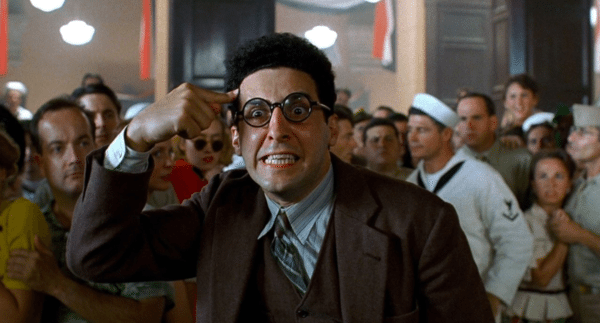Chris Connor looks back over the collaborations between Joel and Ethan Coen and Roger Deakins…
Joel and Ethan Coen have had one of the most eclectic careers of the last 40 years with films across an array of genres, blending humour, action and surrealism. One of the defining aspects of the brothers’ success is their long collaboration with legendary cinematographer Roger Deakins, starting with 1991’s Barton Fink through to their most recent film, 2016’s Hail, Caesar!.
In spite of the slew of styles the brothers have taken to over the years, Deakins’ work remains a constant, be it westerns No Country For Old Men, True Grit or the comedy The Big Lebowski. Deakins has often helped to elevate the brothers’ work, although their previous collaborations with Barry Sonnenfeld on Blood Simple, Raising Arizona and Miller’s Crossing should not be taken lightly.
Fargo has over the years become one of the definitive collaborations between the Coen brothers and Deakins; this is a triumph of a film on many levels, even inspiring a hugely successful TV spin-off, now in its fourth season. Deakins excels at bringing the eerie snow-covered Minnesota landscape to life, truly making the audience feel the chill and making sure the Marge Gunderson’s surroundings form a key part of the story, adding a constant sense of dread. The iconic visuals have helped give the film cult status in the 25 years since its release. Deakins has often asserted that framing was the most important aspect of his work and certainly the framing in Fargo helps to drive the film’s story.
One often overlooked films in the Coen’s filmography is 2000’s Odyssey inspired fable O Brother, Where Art Thou? The oddball comedy stars George Clooney, Tim Blake Nelson and Coens regular John Turturro. Deakins cinematography really makes the film’s scale stand out, bringing Mississippi in the Great Depression well and truly to life. Some of the sweeping panoramic shots are truly mind boggling and help accompany the scope of the story being told. Deakins has been applauded for his digital intermediate work on the film, which evoked the era the film was set. Deakins was rewarded with one of his many Academy Award nominations for Best Cinematography, the second of five he would receive for his work with the Coens.

No Country For Old Men, the Coens’ adaptation of Cormac McCarthy’s 2005 novel, won the Academy Award for Best Picture in 2008 and saw Deakins competing against himself for his work on the The Assassination of Jesse James by the Coward Robert Ford. With a lack of music throughout, the film’s visuals help drive the storyline, with Texas’ bleak and desolate landscape a character in itself. Some of the shots of Javier Bardem’s Anton Chigurh help to deliver a true sense of menace, making him a memorable villain. Much as with his work on Fargo and O Brother, Where Art Thou?, the sheer scale of the visuals is one of the defining aspects of the films success. On the other side of the spectrum, the film’s final close-up of Tommy Lee Jones is far more intimate and shows the range of styles and scales this collaboration has produced even within the same film.
Deakins has noted how the Coen Brothers’ scripts are often very visual in nature, with a great deal of precision in how they want scenes to play out. Deakins has also noted that less raw footage is shot than when he works with other directors.
The Man Who Wasn’t There is another overlooked film that is defined by Deakins’ imagery, shot in Black And White it contrasts much of the other work. Indeed this is the only black and white film in the Coen’s near 40 year career. What’s more remarkable is that the film was shot in colour and converted in post production. An homage to film noir, the film’s visuals evoke the 1940s era it is set in and it feels like it could have come from the era. The mundane shots of areas like Ed Crane’s barbershop are full of life and it is remarkable to think that this came out a mere year after O Brother, Where Art Thou?, showing the range of visual styles at the Coens and Deakins’ disposal.
While Roger Deakins has been behind the visuals for some landmark films over the past four decades, including Blade Runner 2049, Sicario and 1917, it is without doubt his collaborations with Joel and Ethan Coen that have defined his career elevating many of their films and helping them stand the test of time. His work on the likes of Fargo, No Country For Old Men and True Grit is particularly noteworthy but he has remained a constant asset for the brothers. Whether or not they combine forces in the years to come, their twelve collaborations have shown the role cinematography can play in a films greatness and it is one of the most recognisable pairings between a director and cinematographer in recent years.
Chris Connor













